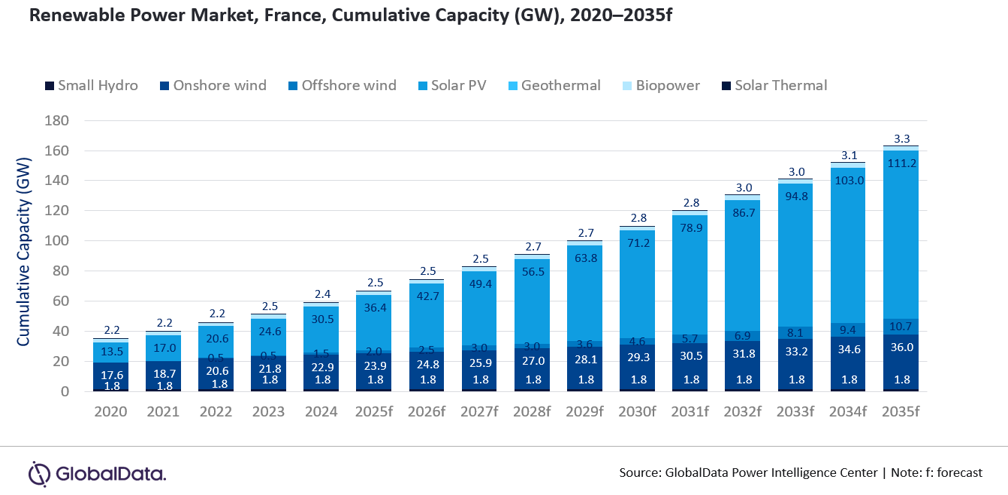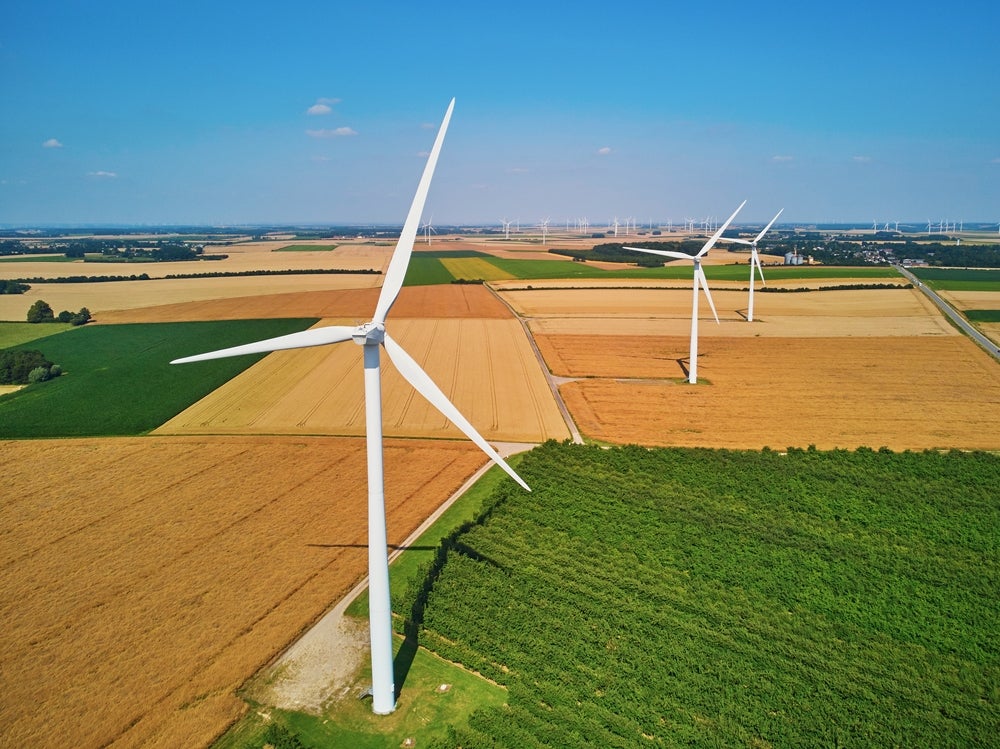GlobalData’s latest report, France Power Market Trends and Analysis by Capacity, Generation, Transmission, Distribution, Regulations, Key Players and Forecast to 2035, provides detailed insights into France’s power sector. The report covers installed capacity (in gigawatts, GW), generation (in terawatts, TWh), technology shares, and policy developments across the historical period 2020 to 2024 and the forecast period 2025 to 2035. It also evaluates market drivers, challenges, investment opportunities and leading company profiles. The analysis draws on GlobalData’s proprietary databases, primary and secondary research, and in-house expertise.
France is accelerating its clean energy transition, supported by expanding wind and solar deployment, the modernisation of hydropower and strong government policy backing. The country’s cumulative renewable power capacity is forecast to reach 163.1GW by 2035, up from 59.1GW in 2024, registering a compound annual growth rate (CAGR) of 9.7% from 2024 to 2035, reveals GlobalData, a leading data and analytics company.

Access deeper industry intelligence
Experience unmatched clarity with a single platform that combines unique data, AI, and human expertise.
The report reveals that wind and solar will remain the main growth drivers. Onshore wind capacity is projected to increase from 22.9GW in 2024 to 36GW by 2035, while offshore wind will expand rapidly from 1.5GW to 10.7GW, driven by large-scale projects in Normandy and Brittany, supported through contracts for difference (CfD) auctions and the government’s offshore acceleration strategy.

Solar photovoltaic (PV) is also set for strong expansion, growing from 30.5GW in 2024 to 111.2GW by 2035, aided by rooftop programmes, agrivoltaic projects and regional energy community initiatives. Biopower and small hydropower will continue contributing to renewable diversification, backed by the National Hydropower Strategy, which promotes modernisation and flexibility upgrades in existing facilities.
While nuclear power continues to serve as the cornerstone of France’s low-carbon electricity system, capacity growth over the forecast period remains limited, increasing marginally from 61.4GW in 2024 to 63GW by 2035. The Grand Carénage program,e, aimed at extending reactor lifetimes, along with plans for six new EPR2 reactors, will ensure long-term energy security alongside expanding renewables.
France’s updated National Energy and Climate Plan (NECP 2024) and Multiannual Energy Plan (PPE) provide a clear framework for accelerating clean energy deployment. Policy measures such as the shift from feed-in tariffs to CfDs, the National Hydrogen Strategy backed by €7billion ($8.3 billion) in funding, and grid upgrades led by RTE are enhancing investor confidence and system flexibility. However, the power sector continues to face structural challenges such as permitting delays, local opposition to onshore wind, and grid bottlenecks in renewable-rich regions such as Occitanie and Nouvelle-Aquitaine. Curtailment levels have risen, reflecting the need for faster infrastructure development and stronger coordination between grid expansion and renewable deployment.

US Tariffs are shifting - will you react or anticipate?
Don’t let policy changes catch you off guard. Stay proactive with real-time data and expert analysis.
By GlobalDataFrance’s growing renewable capacity, supported by strong policy alignment, offshore wind expansion and grid modernisation, marks a key step in strengthening its energy resilience and low-carbon trajectory. With nuclear stability complemented by rapid renewable growth, the country is well positioned to maintain system reliability and continue its progress toward a decarbonised energy future.



